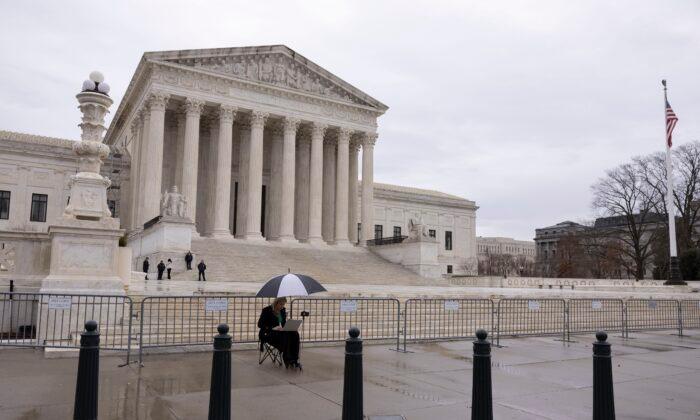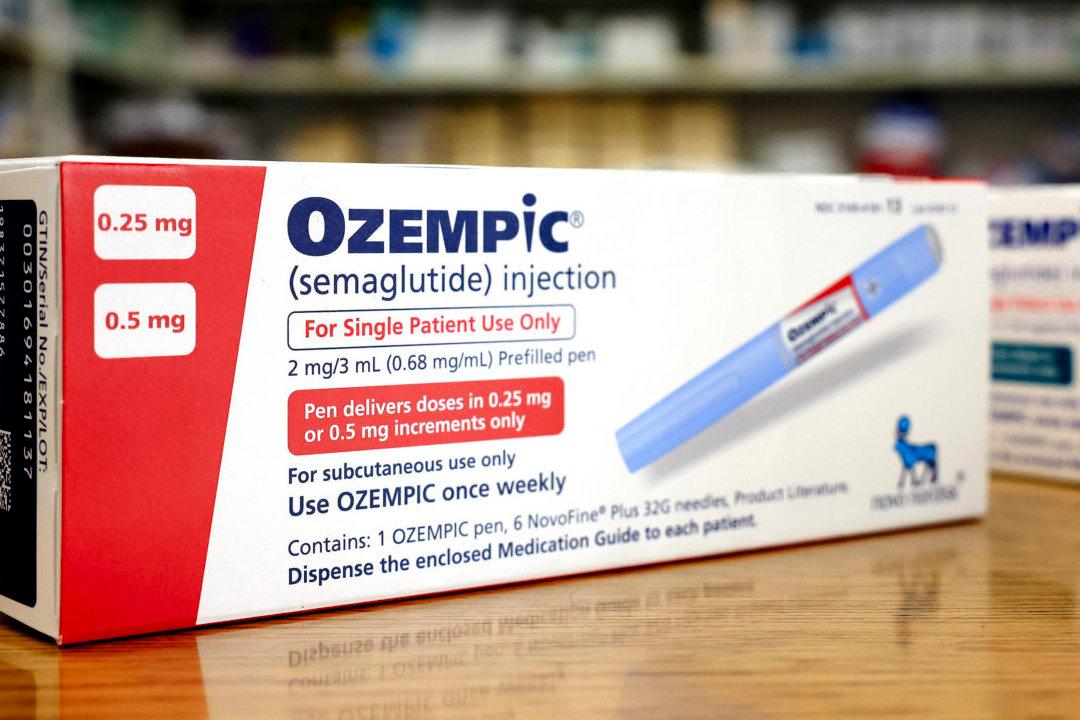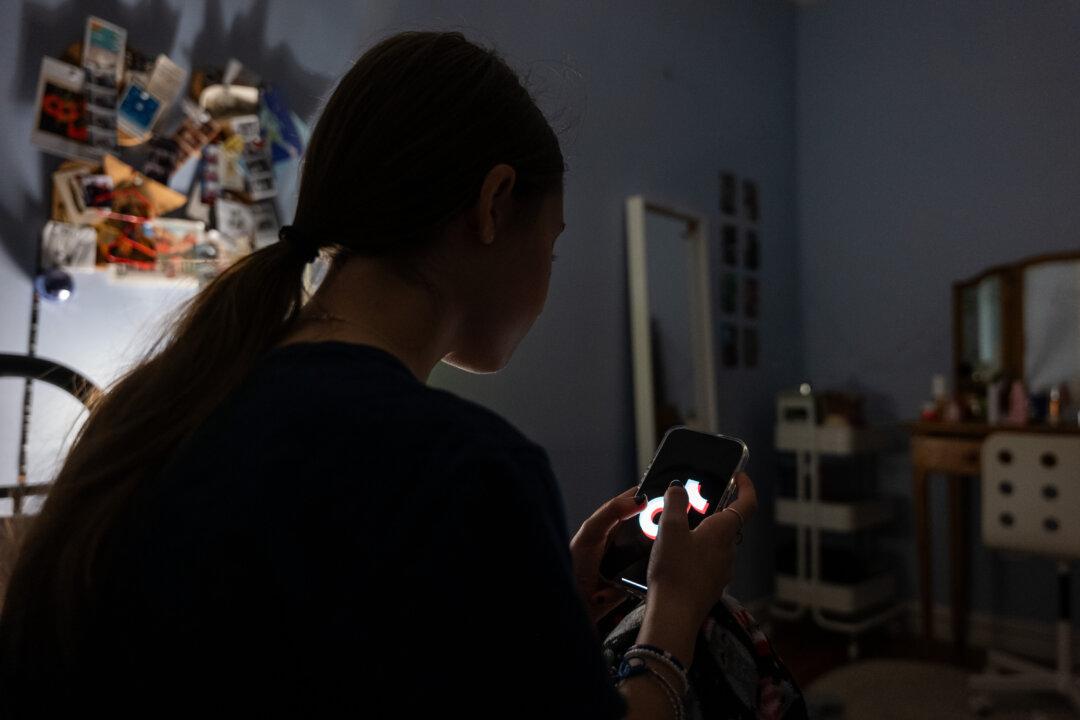On Tuesday, Feb. 28, the United States Supreme Court heard oral arguments for and against the Biden administration’s contested student loan forgiveness program.
A number of legal challenges followed.
The Supreme Court agreed to hear arguments regarding the legality of the Biden administration’s contested program to forgive billions of dollars in federally-backed student loan debt on Dec. 1, 2022.
The HEROES Act
In the case of Biden v. Nebraska, U.S. Solicitor General Elizabeth Prelogar argued that, while the states contend that the HEROES Act “doesn’t authorize the Secretary to ever forgive loan principal,” the secretary’s position is that “Congress expressly authorized” him “to waive or modify any Title IV provision in emergencies to provide financial relief to borrowers.”
Chief Justice John Roberts asked, “is this a waiver, or is it a modification?”
Prelogar said it’s both.
Roberts then asked Prelogar to “take a minute to explain how a waiver or modification” amounts “to a cancellation?”
Prelogar was forced to admit “there’s no express statement in the HEROES Act to discharge loan principal.” It only empowers the Secretary “to waive or modify any Title IV provision.”
“We’re talking about half a trillion dollars and 43 million Americans,” Chief Justice John Roberts asserted, referring to the estimated costs of Biden’s plan and the number of affected borrowers. “How does that fit under the normal understanding of ’modifying'?”
Roberts then recalled an opinion Justice Scalia had written a few years ago, in which “he talked about what the word ’modify' means, and he said modified in our view connotes moderate change.”
Prelogar then said that the word “waive” means to “eliminate an obligation in its entirety.”
Roberts responded, saying the Act doesn’t say “modify or waive loan balances.”
Prelogar said, “Congress itself has provided for loan discharge in other circumstances in response to borrower hardship,” noting how provisions for bankruptcy, total disability, and school closures are included in the Higher Education Act (HEA).
“You think because there’s a provision to allow waiver when your school closes, that because of that, Congress shouldn’t have been surprised when half a trillion dollars is wiped off the books?” Roberts balked.
Justice Sonia Sotomayor also acknowledged the weakness of Prelogar’s argument in defending a half-trillion dollar expenditure.

“How do you deal with that? Because that seems to favor the argument that this is a major question.” Sotomayor said.
“A win on that theory would mean that no one could get any HEROES Act relief,” she argued. “Not Brown, who would get nothing for herself; not Taylor, who would lose $10,000; and not any of the millions of borrowers who need this critical relief.”
Standing
As explained by Ehline Law Firm, “standing refers to an individual’s capacity to pursue a lawsuit.” People with legal standing have “an interest in how the case turns out and how much compensation they receive for the damages incurred.”Noting that “millions of Americans” have been “unable to pay their debts” in the wake of the COVID-19 pandemic, Prelogar suggested that the purpose behind the Biden administration’s student loan forgiveness program is to “head off immediate harm for student-loan borrowers.”

“May I ask you a question about standing?” Justice Samuel Alito posed to Prelogar. “So it’s the case, isn’t it, that if any party in either of these two cases has standing, then it would be permissible for us to reach the merits of the issue?”
“Yes,” Prelogar answered,“ concurring that if the Court concludes ”that any party has standing, then the Court could go on to the merits.”
Alito then addressed MOHELA.
“If MOHELA itself had brought this suit, would you contest Article III standing?” Alito asked.
“No, we would not,” Prelogar answered.
“So then, we would consider the Article III standing of the State of Missouri, right?” Alito returned.
“That’s right,” Prelogar confirmed.
Alito then wanted clarification that “the Article III test that’s most disputed is injury in fact.”
“That’s right,” Prelogar confirmed.
Alito then stated that “injury in fact is a factual question,” and while he understood that “a big thrust” of her argument was that “Missouri lacks standing” because MOHELA “is separately incorporated,” he wanted to know, “Why should that formal distinction govern the determination of injury in fact?”
Considering injury in fact, Alito also wanted to know, “Why should the lack of corporate status be a necessary element” rather than considering “the relationship” between MOHELA and the State of Missouri, and that “an injury to MOHELA will necessarily or presumptively be an injury to the state.”

Justice Ketanji Brown Jackson argued that MOHELA was “incorporated separately” from the State of Missouri and therefore “the state is not liable for anything that happens to MOHELA.”
“I don’t know how that could possibly be a reason to say that an injury to MOHELA should count as an injury to the state,” she argued.
Justice Elena Kagan asked Nebraska Solicitor General James Campbell, “Why isn’t MOHELA responsible for deciding whether to bring this suit?”
Justice Jackson also challenged Campbell on the alleged harms that the loan forgiveness program would cause MOHELA.
“If MOHELA is being injured as a result of the plan, or at least if that’s the allegation, MOHELA has the ability to defend itself and its interests, correct?” Jackson asked Prelogar.
Justice Amy Coney Barrett, an originalist justice appointed by President Donald Trump, appeared to side with the liberal-leaning justices when she grilled Campbell on standing and why MOHELA didn’t file a lawsuit on its own behalf.
“Do you want to address why MOHELA is not here?” Barrett challenged. “Why didn’t the state just make MOHELA come then?”
“If MOHELA is an arm of the state, why didn’t you just strong arm MOHELA and say, ‘You’ve gotta pursue this suit’?”
Campbell insisted that Missouri has an interest in MOHELA and the “authority to assert its interests.”
The Fairness Arguments
In the case of DOE v. Brown, Campbell argued, “Respondents were deprived of their procedural rights, and their finances suffered. Brown got nothing, and Taylor received only $10,000, even though high-income individuals making more than five times as much got $20,000. The law requires that the Secretary give Respondents an opportunity to be heard.”Justice Jackson questioned Campbell’s position.
“Doesn’t your theory of injury rely on the assumption that if the HEROES Act isn’t there or if there’s a problem with the HEROES Act, the administration would necessarily have done the same thing under the HEA?
Justice Neil Gorsuch questioned what the “cost” of the plan is “in terms of fairness” to people who have paid their loans, who haven’t taken out loans, or who are ineligible for loans in the first place.
Chief Justice Roberts then questioned whether the exorbitant expense of the program was necessary, saying “if more than half the people say they don’t need this relief, extending relief to that breadth certainly raises questions.”
Roberts added that it’s “appropriate to consider some of the fairness arguments.”
He compared a hypothetical of two kids who come out of high school. Neither can afford college, but “one takes a loan, and the other says, ‘Well, I’m going to, you know, try my hand at setting up a lawn care service,’ and he takes out a bank loan for that.” Statistically, the kid with the degree will have a brighter financial future than the one who didn’t get a degree. Yet four years, later the government tells the kid with the degree that he doesn’t have to pay back his loan.
“Nobody’s telling the person who is trying to set up the lawn service business that he doesn’t have to pay his loan,” Roberts noted, adding that “his taxes are going to support the forgiveness of the loan for the college graduate.”
Justice Jackson also noted how “massive infusions of money” were bestowed upon companies and organizations in the wake of the COVID-19 pandemic. However, she acknowledged that these relief checks were authorized by Congress, not by the president or the DOE.
The Supreme Court’s decisions in the cases are expected before the end of June.




